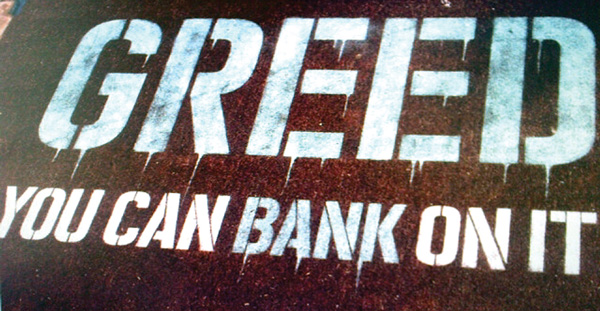News & Articles
Browse all content by date.

The national media is in a survey mode, trying to make additional bucks from all that political money loosed by the Republican Supreme Court’s decision in Citizens’ United. The media comes up with “exciting” breaking political news every hour of the day from polls, controversy about she-said vs. he-said on the campaign trail, “lies” on Twitter, Instagram, and all those other “social” networks. It’s great for the media’s bottomline. It also illustrates a great dumbing-down of our society. Most Americans born here who will vote in the 2016 election will not be able to name the three branches of our government and have little knowledge of the federal court system. Most of our millenials would not pass the simple civics test aced by over 90% of new citizens. As an example of civic “dumbness,” a recent survey of Texas Trump supporters revealed that 40% of them believed that a group called Acorn will steal the 2016 election. This community-organizing group that supported Democratic Party voting registration was driven out of existence by Republicans over six years ago! We also know through literacy tests that 30 million Americans cannot read. But we also know through polls that many more than 30 million are politically ignorant about ordinary civics. These are people who will be unable to process or accept basic facts needed—but will still vote.
Only 16% of the American people could locate Ukraine on a world map when surveyed. The Donald said his buddy Vladimir would not invade the Ukraine—which Putin had done two years before Trump said he wouldn’t. The Princeton Review examined the language and the range of topics in the Lincoln-Douglas debates of 1858 and determined the debates were at a high school senior level. It analyzed the 1960 Kennedy-Nixon debate and said it barely reached the 10th grade level. By 2000 Al Gore and Dubya slipped to the sixth grade level. Will Hillary and The Donald attain preschool or first grade level? Will ignorance or lying ever cease? The year 2015 was the hottest year on record since records have been kept, but a Gallup Poll of Republicans found that 45% did not believe the TV and radio meteorologists who were telling them the temperatures!
The Wealth Gap And Its Effect On Education
The United States has the worst income inequality among industrialized nations and it’s getting worse. Not only is our middle class disappearing, the wealth gap is affecting our overall ability to educate our society so it can be competitive in the world. The comparatively wealthy state of Connecticut is a microcosm of our national problem through two side-by-side school districts. A New York Times 9/11 story outlines our local and national education problems. Fairfield is a white suburban community with a median income of $120,000 per family (most economists say $125,000 is the top for the middle class in most situations) that graduates 94% of its high school students on time. Bridgeport is the biggest city in the state and is one of the poorest. The graduation rate is 63% in the mostly black and Hispanic city. As an example, fifth graders in Bridgeport often read at the kindergarten level. This was the testimony of teachers testifying in court in a school funding case. At a school morning at Fairfield Ludlowe High School yellow school buses line up and students hop off to a beautiful brick building surrounded by spacious treed lawns. At Bridgeport’s Warren Harding High School in the morning there are no buses. The district cannot afford them. Harding’s graduation rate is 54%. Some students enroll at Harding High reading at a third grade level. Severe cuts to athletic programs that often are a great draw for students at the poverty level discourage students and increase the dropout rate. Many students drop out at 16 because they have to become the sole supporter for one-parent families. Bridgeport does spend about $14,000 per school year, but the property-poor district has to tax its residents at a much higher rate than Fairfield. Bridgeport students are clearly the victims of poverty and cultural deprivation. Fairfield spends $16,000 per student (while some districts in Connecticut spend up to $25,000 per student), but the residents of the upper-middle class suburb take their kids to museums, travel extensively, can hire special tutors, raise money for field trips and school programs, and enroll their students in enrichment classes offered in the curriculum.
Superior Court Judge Thomas Moukawsher had heard enough while listening to a court case known as the Connecticut Coalition for Justice in Education Funding v. Rell. He gave the state six months to correct school financing plans that currently allow students in poor districts to “languish” in poverty while the wealthier districts spend on K-12 education as much as double what the poor districts do. He demanded that the state had to determine how much money was needed to educate all children—and then allocate the funds to meet that goal in all districts. Presently the wealthier cities of Greenwich and Stratford surrounding Bridgeport pay teachers $25,000 to $30,000 more than Bridgeport can offer. Over 20% of Bridgeport students qualify for special education programs, but the district cannot compete for special education teachers because of low salaries.
A Twisted Fantasy In California’s Silicon Valley
The same situation, only with different figures denoting the wealth gap, exists 3,000 miles away from Connecticut in the la-la land of California. Writer Alissa Quart in her article “The Battle To Expose The Dark Finances Of California School Privatization” reveals the real problems facing teachers and school districts in one of the wealthiest states in the union. She writes about 12-year veteran history teacher Matt Barry and his wife Nicole who each make $69,000 teaching in Live Oak, a suburb of San Jose, the center of the Silicon Valley tech boom experience. Although Matt and Nicole make a combined $138,000 a year and would be near the top of the middle-class definition in most school districts in other states, they both have to have part-time jobs to survive financially. They can’t afford to live where they teach because the median price of homes in Live Oak is $800,000. They are forced to live in Gilroy which is 20 miles away where the median price of homes is “only” $650,000. This is a dramatic problem as a teacher because you never get to see students in their home environments. Nicole is now pregnant so their health insurance bill will go up $6,000 a year when she gives birth. Barry has a part-time job after school and on weekends driving for the Uber Corporation. He often delivers executives to other wealthy suburbs in the San Jose area. In between customers he grades papers while sitting in his vehicle.
Matt says, “Teachers are killing themselves. I shouldn’t be having to drive Uber 8 o’clock on a weekday. I just shut down from the mental toll: grading papers in between rides, thinking of what I could be doing instead of driving—like creating a curriculum.” Live Oak is filled with custom-built homes with swimming pools and “super” recreational basements—and residents unwilling to raise taxes to pay teachers a salary that would allow them to live in the community. Quart calls this the Silicon Valley Fantasy: “low taxes, good schools—and your kid’s teacher might drive you home after your expense-account meal with a venture capitalist!” A one-bedroom apartment in nearby San Francisco rents for $42,000 a year but the school district ranks 528th out of 821 districts in the state in teacher pay. The corporate headquarters for Wells-Fargo, the largest bank in the country, is in San Francisco. It recently paid a fine of $185 million for setting up fraudulent accounts for depositors. It fired 5,300 bank employees for establishing these accounts–while paying the vice-president who dreamed up and managed the fraud is walking off to retirement with $125 million! Maybe Wells-Fargo is really banking fantasies!
The Future Destruction Of Public Universities
The future of public universities is perhaps more in doubt than the future of K-12 education. Politicians used to believe that higher education was a public good. Think of the Morrill Land-Grant colleges strung out across the country. The purpose was to make public higher education available to anyone regardless of means. How many parents with a median family income can now afford to send a child to college? The end of this kind of state support started to end in the Reagan-era of the 1980’s.That’s when disinvestment started and access for the poor and middle class began to disappear. But it’s apparent that idea has been replaced. Students now must pay the major share of their education because education is a commodity in a market-based ideology. A functioning society evidently no longer needs artists, musicians, historians, philosophers, and librarians.
The United States used to lead the world in the percentage of its young adults attending four-year institutions. We are now 16th and losing further ground fast. Practically all states are failing to support higher education, requiring universities to dramatically increase student tuition and fund raising. Is there a public university in the country where tuition and living costs are less than $25,000 a year? The major Texas public universities used to receive about 60% of operating funds from taxes. Now the state legislature is providing about 12%. Governor Scott Walker has cut higher education so much the University of Wisconsin is a small shadow of its former self. The president of Louisiana State University recently told his state legislature if the cuts continued to come LSU would be forced into bankruptcy. So-called reformers now preach that if a student walks out of a university as a graduate he should have paid for his degree. After all, you will have a good job and be able to pay off your student loan instead of having the state pay for it. This happens to be a completely different view from the original idea of land-grant and other public universities. And that’s why we are 16th and fading fast.
The One Percent Who Fight Our Wars Do Not Attend Elite Universities
As a result of the GI Bill after World War II veterans used it to attend public universities and many elite private colleges, Ivy League and all. It was the best investment this country ever made. I was surprised—but not shocked—to read that very few veterans are attending elite higher ed schools. Most veterans these days come from the poorer counties in the country because of the lousy job market—and they want to get out of town. At the present time we have over two million veterans eligible for the GI Bill. Vet enrollment in elite colleges was as follows in 2015: Yale, four; Princeton (rated the finest university in the country!), one; Williams, one, MIT, one; Duke, two; and Carleton, zero. Harvard claimed they had never counted the vets. All of these elite schools have very sophisticated recruitment teams and practices. How hard did they work to recruit veterans ? Some try. Vassar, Wesleyan, and Dartmouth commit to enrolling ten vets each year. In 2016 Yale has 11 vets out of 5,500 undergraduates. Wick Sloane, a teacher at Bunker Hill Community College, has been asking elite colleges about their vet enrollment for eight years. He thinks the elites should enroll as many vets as they do freshman football players! But lack of money and high tuition rates eliminate practically all veterans.
We recently spent $4.4 billion building a newly designed Navy destroyer that is called stealthy and very futuristic. It has two gun mounts that can fire 600 rocket-powered projectiles over 70 miles at an enemy ship. That amount of money would pay the tuition and costs for 18,000 veterans to earning a four-year degree at Harvard, Yale, or Princeton. That would be a much better investment.
| Tweet |


